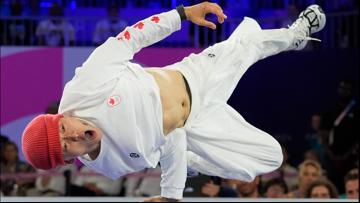The Beijing Organizing Committee kicked off the 2022 Winter Olympics with the opening ceremony on Feb. 4. Athletes from around the world will compete on snow and ice in and around Beijing for the next two weeks.
But will the athletes actually compete on real snow? Headlines in the week leading up to the start of Beijing 2022 have suggested otherwise, claiming the event will rely almost entirely on artificial snow.
THE QUESTION
Are the Beijing Olympics relying almost entirely on artificial snow?
THE SOURCES
- Sport Ecology Group
- Beijing 2022 Pre-Games Sustainability Report
- Study from Department of Geography and Environmental Management at University of Waterloo in Canada
- Noah Molotch, associate professor of geography at the University of Colorado Boulder
THE ANSWER
Yes, the Beijing Olympics are relying almost entirely on artificial snow.
WHAT WE FOUND
According to a report from the Sport Ecology Group, the 2022 Beijing Olympics will make history as the first Olympics on “virtually 100% artificial snow.” Noah Molotch, associate professor of geography hydrology at the University of Colorado Boulder with expertise in snow hydrology and a doctorate in hydrology, said this will be the first Winter Olympics to rely almost entirely on artificial snow and to knowingly plan to do so from the beginning.
“Many Olympic Games will rely on natural snowfall, but then hedge with artificial snow as needed to augment the natural snow,” Molotch said. “But in these particular games, they knew going in that it's a place that gets very little natural snowfall, and that they would rely exclusively on artificial snow.”
The Olympics’ use of artificial snow for the 2022 Games is confirmed in the Beijing 2022 Pre-Games Sustainability Report. The report explains strategies the Beijing Organizing Committee is attempting to reduce water consumption in the creation of artificial snow, although the report doesn’t confirm the extent to which the Beijing Games will rely on artificial snow.
The Sport Ecology Group said artificial snow has been used in the Winter Olympics since the 1980 games in Lake Placid. Molotch said the snow in the 2014 Sochi Olympics, which were located in an unusually warm climate for the Winter Olympics, was 80% artificial.
“Artificial snow tends to be a lot more dense, a lot icier, a lot harder, more like concrete once it's formed on the ground; whereas natural snow can be more like powdery snow, lighter and fluffier,” Molotch said. “Natural snow can also become icy over time, but when it initially falls from the sky, it's quite light and fluffy.”
Artificial snow is good for keeping snow conditions consistent from the top to the bottom of a hill, making it good for downhill skiing and other competitions that rely on speed, Molotch said. For aerial events like the halfpipe, he said, artificial snow can be more hazardous to crashing athletes because of its firmness.
But there is no right formula of snow to eliminate hazards for the athletes. Molotch said that even a mixture of artificial snow and natural snow can become inconsistent on the surface and therefore unsafe as athletes scrape off and melt the top layer of natural snow over the course of a competitive day.
The athletes know the characteristics of the different snow mixtures and prepare appropriately to compete on the specific conditions they’ll face, Molotch said. And they likely have plenty of opportunities to practice on artificial snow.
“Ski resorts across the world rely heavily on artificial snow early in the snow season,” Molotch said. “And depending on where you are in the world, they may rely on it throughout the entire ski season.”
The Sport Ecology Group report estimates that 95% of ski resorts globally rely on snowmaking to some extent. The resorts use their artificial snow to ensure good quality conditions, prolong the ski season, or both.
One major issue with artificial snow is that it’s incredibly water-intensive to create. That’s why the Beijing Organizing Committee dedicated an entire section of their sustainability report to mitigating its impact on the local water supply. This includes its adoption of a “smart snowmaking system” that can be monitored in real-time with digital devices. The Beijing Organizing Committee believes it can save up to 20% of water in snowmaking by using this system.
The need for artificial snow might continue into future Winter Olympics because of climate change, according to the Sport Ecology Group report. A study published in Jan. 2022 led by researchers from the University of Waterloo in Canada predicted that in the event of high levels of fossil fuel emissions, only four of the past 21 Winter Olympic host cities, including Beijing, will make for reliable winter host locations by 2050 because of poor natural snow conditions. The researchers believe just one host city — Sapporo, Japan — will still be a reliable host of the Winter Olympics by the end of the century.












